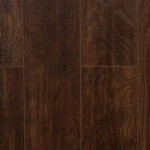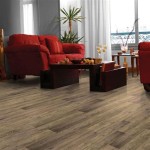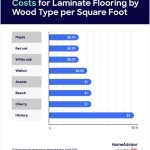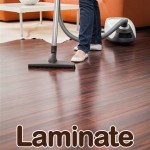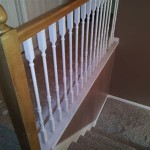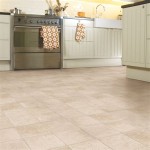Lino Flooring: Exploring the Pros and Cons
When selecting flooring options, lino flooring often garners attention as a versatile and sustainable choice. Understanding its advantages and drawbacks is crucial before making an informed decision. Let's delve into the essential aspects of lino flooring, exploring both its benefits and potential limitations.
Benefits of Lino Flooring
- Durability: Lino flooring boasts exceptional durability, making it ideal for high-traffic areas such as kitchens and entryways.
- Water Resistance: Its water-resistant nature renders it suitable for rooms prone to moisture, such as bathrooms and kitchens.
- Hygienic: Lino flooring contains antimicrobial properties, contributing to a healthier indoor environment.
- Versatility: Available in various colors, patterns, and styles, it offers aesthetically pleasing options to complement any décor.
- Sustainability: Derived from natural materials like linseed oil, cork, and jute fibers, lino flooring is an eco-friendly option.
Cons of Lino Flooring
- Indentation: Lino flooring can be prone to indentation from heavy furniture or sharp objects, requiring proper protection measures.
- Not Suitable for Extremely Wet Areas: While water-resistant, it may not withstand prolonged immersion in water, making it unsuitable for areas like showers or outdoor use.
- Limited Color Options: Compared to other flooring materials, lino flooring may offer a more limited range of colors and patterns.
- Cold to the Touch: Lino flooring can feel cold underfoot during colder months, requiring additional insulation or underfloor heating.
- Professional Installation: Installing lino flooring typically requires specialized skills and expertise, potentially increasing installation costs.
Conclusion
Lino flooring presents a unique blend of advantages and drawbacks, making it essential to carefully consider its suitability for your specific needs. Its durability, water resistance, and hygienic properties make it a compelling choice for kitchens, bathrooms, and other high-traffic areas. However, its susceptibility to indentation, limited color options, and potential coldness require attention.
If you value durability, hygiene, and sustainability, lino flooring can be a valuable investment. However, if you prioritize a highly customizable look, warmth underfoot, or extremely wet resistance, exploring alternative flooring options may be more appropriate. Ultimately, the best decision depends on your individual preferences and the specific requirements of your space.

Linoleum Flooring Pros And Cons Forbes Home

Linoleum Flooring Pros And Cons Greenfield

Vinyls Vs Linoleum Flooring Major Differences Pros Cons And Costs Forbes Home

Linoleum Vs Vinyl Flooring Which Is Better
.jpg?strip=all)
What Is Linoleum Flooring America

Pros And Cons Of Linoleum Flooring A Sustainable Option For Your Home

Is Linoleum Flooring Right For Your Home Carpetready Net

Pros Cons Of Vinyl Flooring Eric Wright Carpets

Vinyl Vs Laminate Flooring Pros Cons And Differences Forbes Home

Linoleum Vs Vinyl Flooring Which Is Better
Related Posts

